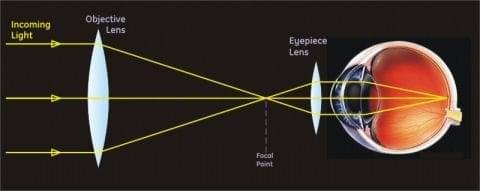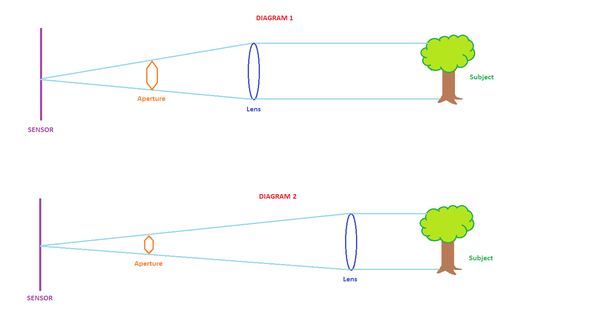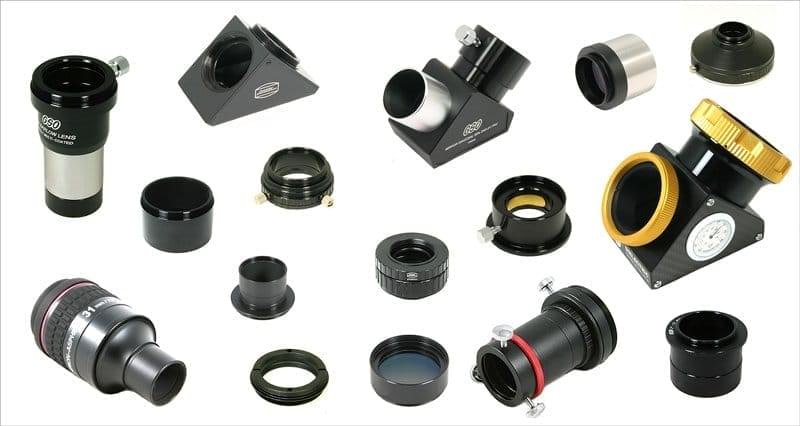Are Telescope Lenses Universal: An In-Depth Look
The universe, with its celestial wonders, beckons every starry-eyed dreamer. For many, a telescope is the portal through which these distant marvels become personal and tangible. Yet, in the intricate world of telescope optimization, one question looms large for seasoned stargazers and rookies alike: Are telescope lenses universal, as some might claim?
In this exploration, we traverse the vast expanse of telescope technologies to uncover the truth. Despite the vast array of lenses available, finding universality among them is more complex than it seems. Join us as we dissect the facets of telescope lenses and reveal the reality behind this astronomical conundrum.
Lenses used in telescopes: an overview

Before we can determine the universality of telescope lenses, it’s crucial to understand the diverse roles different lens types play. Broadly, a telescope consists of two main optical components: the objective lens or mirror, which gathers light, and the eyepiece, which magnifies the image created by the objective. There are various designs for both components, tailored to specific needs and applications.
Eyepieces and Objectives: Their Role
Telescope objectives come in different forms, such as refractors with lenses and reflectors with mirrors. Each has its strengths and weaknesses, impacting the quality and characteristics of the image. Eyepieces, on the other hand, work in conjunction to bring you closer to the stars and vary in design for tasks like terrestrial viewing or astrophotography.
The factors that influence compatibility
Telescope lenses are not one-size-fits-all due to various factors influencing compatibility. Focal length dictates the magnification power of the lens, while the aperture influences the depth of field and intensity of the light entering the telescope. The mount type is also crucial, as certain lenses are designed for specific mounts, be it the popular alt-azimuth or the more specialized equatorial.
Focal Length and Aperture Considerations

When coupled with the eyepiece, a telescope’s focal length determines how near or far objects appear. However, this combination must also be balanced with the aperture size to ensure a clear, bright image without losing detail. Smaller apertures work well with shorter focal lengths, offering broad fields of view, while larger apertures paired with longer focal lengths are preferred for high-magnification viewing.
Mount Type and Telescope Design Variations
Telescope mounts play a significant role in tracking celestial objects. Lenses designed for one mount may not be suitable for another, so understanding the mount specifications of your telescope is essential when considering new lenses. Additionally, the telescope’s design, whether a compound telescope or a classical refractor, affects the compatibility of eyepieces.
Practical Implications
Navigating the world of telescopes and their lenses can be daunting, but it’s crucial for optimizing your astronomical experience. Understanding which lenses work best with your telescope model and whether adapters are needed for non-standard equipment can save time and frustration.
Matching Lenses to Specific Telescope Models
Telescope manufacturers often recommend a range of lenses for their specific models, taking into account the optics and mechanics of the telescope. While these can be a safe and easy choice, they might only provide the best performance for some situations. Searching for the most compatible lenses for your telescope’s unique design and purpose is a step towards customizing your viewing experience.
Adapting Non-Universal Lenses

Sometimes, a favourite eyepiece from another telescope or a different manufacturer doesn’t quite fit the eyepiece holder of a new telescope. In such cases, adapters can often resolve the issue, allowing you to use the non-universal lens with your telescope. However, it’s essential to research and ensure the adapter doesn’t introduce any adverse effects on the optical path, such as vignetting or distortion.
Impact on Performance
The performance of your telescope and its lenses is the ultimate judge of its universality. Factors such as clarity, chromatic aberration, and field of view come into play alongside the telescope’s intended use. Adapting the right lenses can not only restore but enhance your telescopic experience.
Clarity and Magnification Effects
The clarity of an image through a telescope is a composite of various factors, including the quality of the lenses and mirrors, dust and contamination, and how well the telescope is collimated. Not all eyepieces and objectives are equal, and some combinations may cause more distortion. Additionally, adequate or excessive magnification with a clear view can detriment the viewing experience.
Adjusting for Optimal Viewing Experience
To achieve an optimal viewing experience, it’s essential to experiment with different combinations of objectives and eyepieces. For example, rocket or hybrid eyepieces can fine-tune magnification and field of view, allowing you to observe a broader range of celestial objects with greater detail and clarity.
Conclusion
While the term “universal” may imply a one-size-fits-all nature, the reality for telescope lenses is a bit more nuanced. The true versatility lies not in the ability to fit all telescopes but in the adaptability and interchangeability of some systems. As you advance in your astronomical pursuits, remember that each telescope and lens combination is a unique tool for exploring the cosmos. By understanding the optics, mounts, and practical implications of lens selection, you’re one step closer to customizing a solution that fits your unique vision of the universe.
faqs
Can I use any eyepiece with any telescope?
Not always. Most telescopes accept 1.25″ or 2″ eyepieces. You must match the size to your focuser.
Are telescope objective lenses interchangeable between brands?
Usually not. Objective lenses are designed for specific tube sizes and optics. Swapping them often needs expert alignment.
Can I use camera lenses on a telescope?
With adapters, yes—some camera lenses can attach to telescopes. But the field of view and magnification will be different.
Do all telescopes use the same lens materials?
No. Some use standard glass, others use ED or APO lenses. These improve clarity, color correction, and reduce distortion.
Why isn’t lens universality common in telescopes?
Each telescope design has unique optical paths and requirements. Mixing parts can affect performance or image quality.







